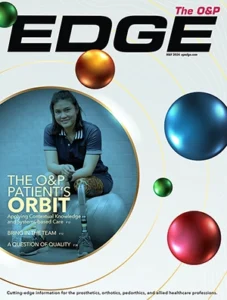A study testing a brace padding method based on trunk asymmetry for adolescents with idiopathic scoliosis found that the system improved the trunk appearance without negatively affecting the Cobb angle correction.
The study’s authors noted that conventional bracing designs rely on the clinician’s expertise and visual assessment, but the proposed method used 3D scanning and symmetry to determine the magnitude and location of bracing pads for corrective force. The study compared the efficacy of the developed method with conventional bracing in improving the Cobb angle and body posture symmetricity. The authors concluded that the proposed method improved the trunk appearance without negatively affecting the Cobb angle correction.
Eight participants were divided into conventional and new padding groups. The variation of Cobb angle and torso asymmetry parameters, including the trunk rotation and back surface rotation, as well as the brace satisfaction and trunk appearance perception of the groups, were compared after three months of treatment.
The research team used a 3D scanner to measure the trunk surface geometry, the best plane of symmetry was determined, and the original trunk was reflected in the plane of symmetry, creating the reflected trunk. The difference between the reflected and original trunks was computed and color-coded using deviation contour maps. The boundary of deformed regions, with a minimum of 6mm deviation contour maps, was identified as the trim lines for brace pads.
The results showed that the Cobb angle improved equally in both groups. However, back surface rotation improved in the new bracing group (+49.6 percent) and worsened in the conventional bracing group (-6.8 percent). The mean trunk rotation improved by 30 percent in the new bracing group and further exacerbated by -2.2% in the conventional bracing group. The brace satisfaction and trunk appearance perception scores were higher in the new bracing than in the conventional bracing group, however not statistically significant, the study concluded.
The study, “A new scoliosis brace padding method based on trunk asymmetry for scoliosis treatment,” was published in Prosthetics and Orthotics International.





